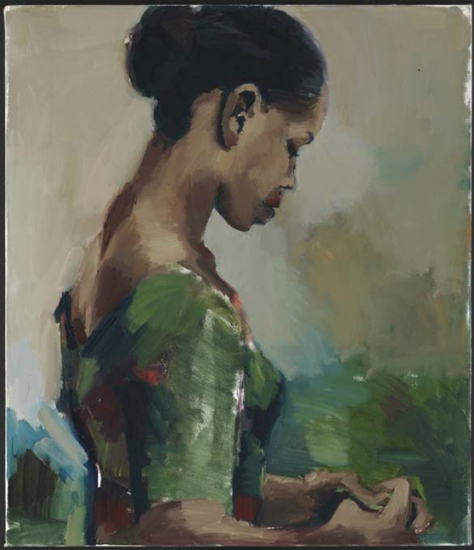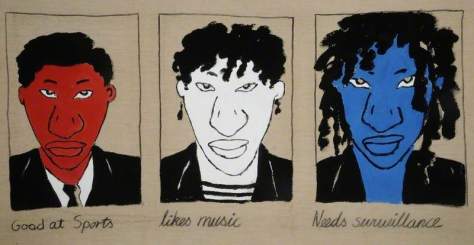Read the chapter The Fact of Blackness by Frantz Fanon on pps 417 – 420 of the course reader.
• Fanon is writing from the point of view of a black colonial, a second-class citizen of his own country (although in French law he was a citizen of France). What are his key points and how do these relate to visual culture?
At the start of this essay a child is a child that does not have any experiences to think they are different or treated differently.
There is an industry given over to trying to create something to ‘denegrificate’. So while Fanon had a whole history of responses, experiences etc to ground him, in white terms he was the uncorroborated history of stories and anecdotes.
Then after a situation involving white people, this person who is black comes to the realisation that they are a sign, emptied of personal and filled with a history that represents something that is to be feared.
Their reactions are misunderstood and those emotions referenced back to this history.
They are an object, not an individual
He wants to be thought of as the individual he is, as unthought of in a group of black people as I am in a supermarket and visa versa. Instead of grouped into this historical residue that negates his education and life in modern culture.
Black culture throughout history has been seen through the eyes of white society, which homogenised black people.
This is all tainted with the view one culture has had with another, when neither have a pristine history (we tend to brush over the whole empire thing).
Whilst all media still perpetuates the image of the black person as less than the white person in any way, this problem will continue, although I hope that it is less marked now than at the time this essay was written (1967).
This could be seen in context of histories view of women, which has never been covered up or forgotten and is still in place today to keep female roles the same, the objectification of women however is not sen through a position of hatred or fear of the unknown, it is viewed through desire and covet and scopophilia.
The difference in the sign of the black person and the woman is the alternate definition of how someone has power over them.
• Many artists of Afro-Caribbean, African or Asian family origins working in Britain, the country of their birth, make work dealing with their take on, for want of a better term, blackness. Find such a work and make notes and annotations to explain this. Chris Ofili is just one such artist but there are many others.

The Work (2015)Lynette Yiadom-Boakye
This was part of a series of paintings that where shown in the British art show 8 2016, Which I saw in Southampton. It was unique in the exhibition as the only example of painting among the mediums used to show where art is currently at in this country.
Yiadom-Boakye’s paintings all had a subdued palette that looked almost retro 1950’s and all showed young ordinary black people going about life. Cross legged on a chair, exclaiming something to someone we cannot see etc. They are everyday people doing everyday things.
The technique she has chosen to show these people is a white European staple, in painting and her work revolves around these pictures of black people out of her imagination.
They put black people into our current culture in a way that is missed by other painters, maybe unconsciously that is what Yiadom-Boakye is painting.
The artist is younger than me, I would hope her view of racism in this country is less than Fanon’s, and she has to deal with being female too…

School report, as simple trio of drawings of the same features, different hair-do. In red, white and blue. is a strong comment against stereotyping happening at an early age in school. Defining what anyone is going to be like from how they are at school is ridiculously shortsighted at the best of times, Josephs comment that it is happening because of skin colour is a strong message much the same as Fanon’s.
This is people as signs not individuals.
Singh, A(2017)The not so Young British Artists: All 2017 Turner Prize nominees are aged over 40 Telegraph 3rd May available here http://www.telegraph.co.uk/news/2017/05/03/not-young-british-artists-2017turner-prize-nominees-aged-40/ [accessed 29th April 2017]
Yiadom-Boake(2015)all works [oil on canvas] in British art show 8 place Southampton Gallery & Colin, A Yee, L(2015) British Art Show 8. First edition. London. Hayward publishing
Fanon, F(1967)The fact of blackness In: Visual culture reader, Jessica Evans, Stuart Hall. London. Visual culture reader. pp.417-420
Joseph, T(1983) School report [materials unknown] [online image]Place:[s.l.] available here http://www.tamjosephartlive.com/studio12.html
